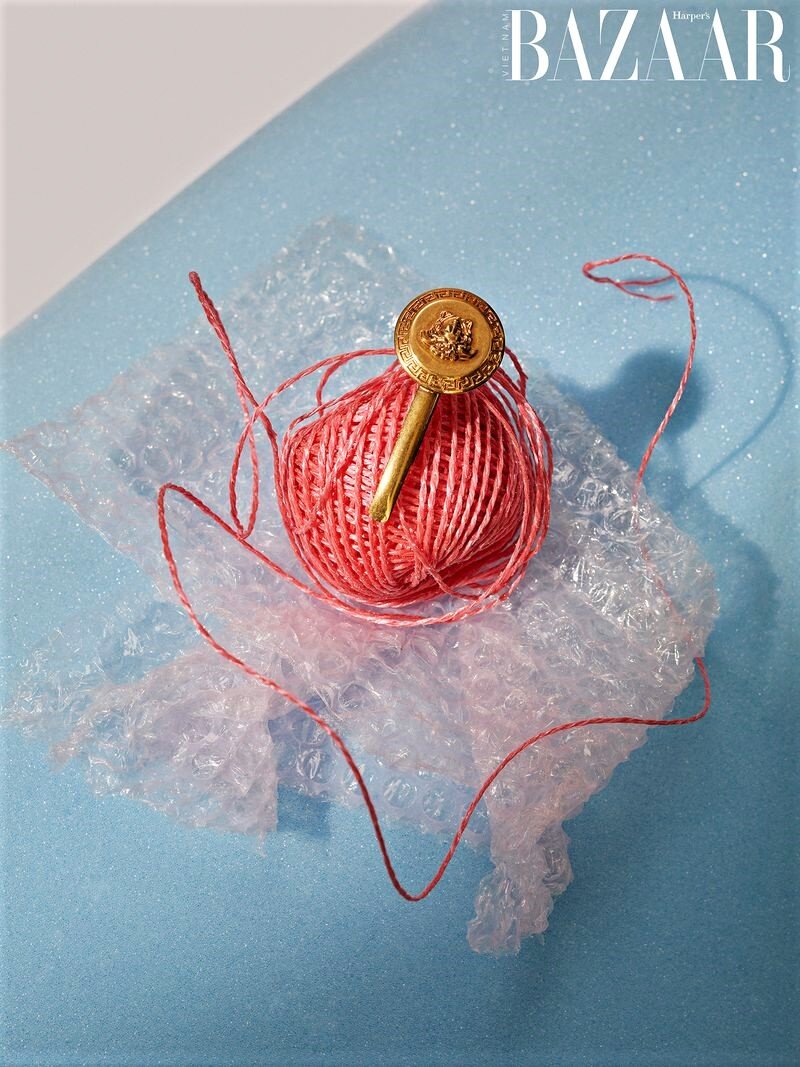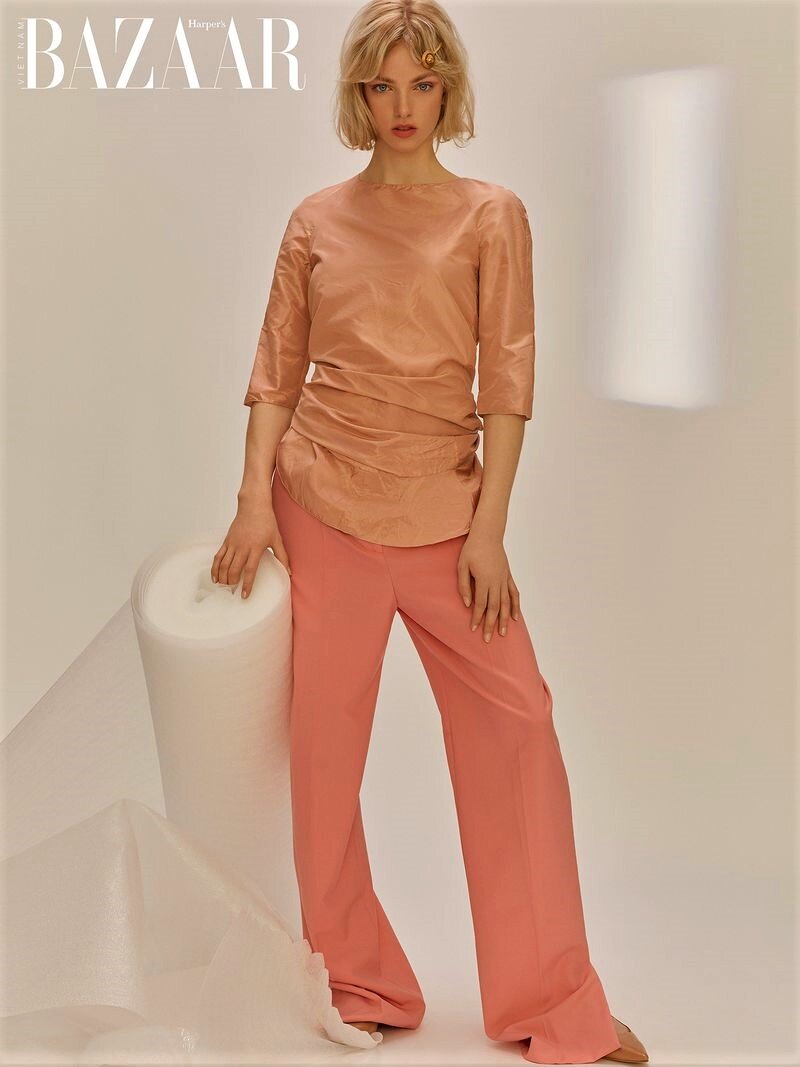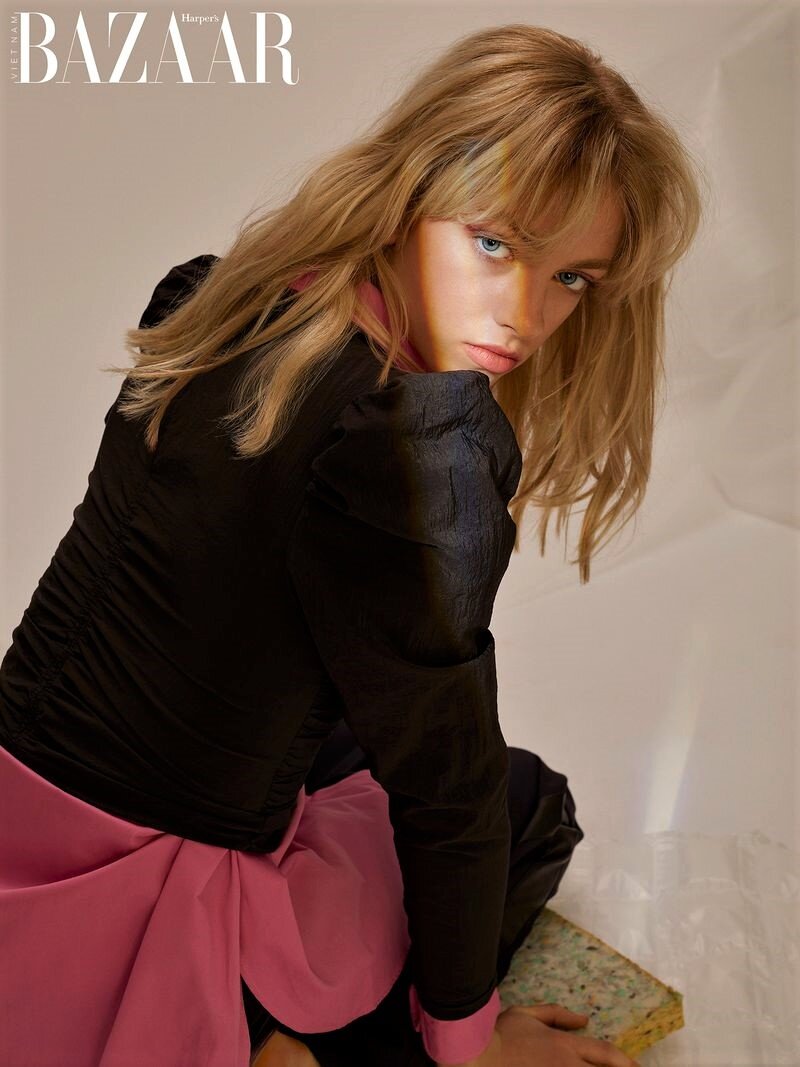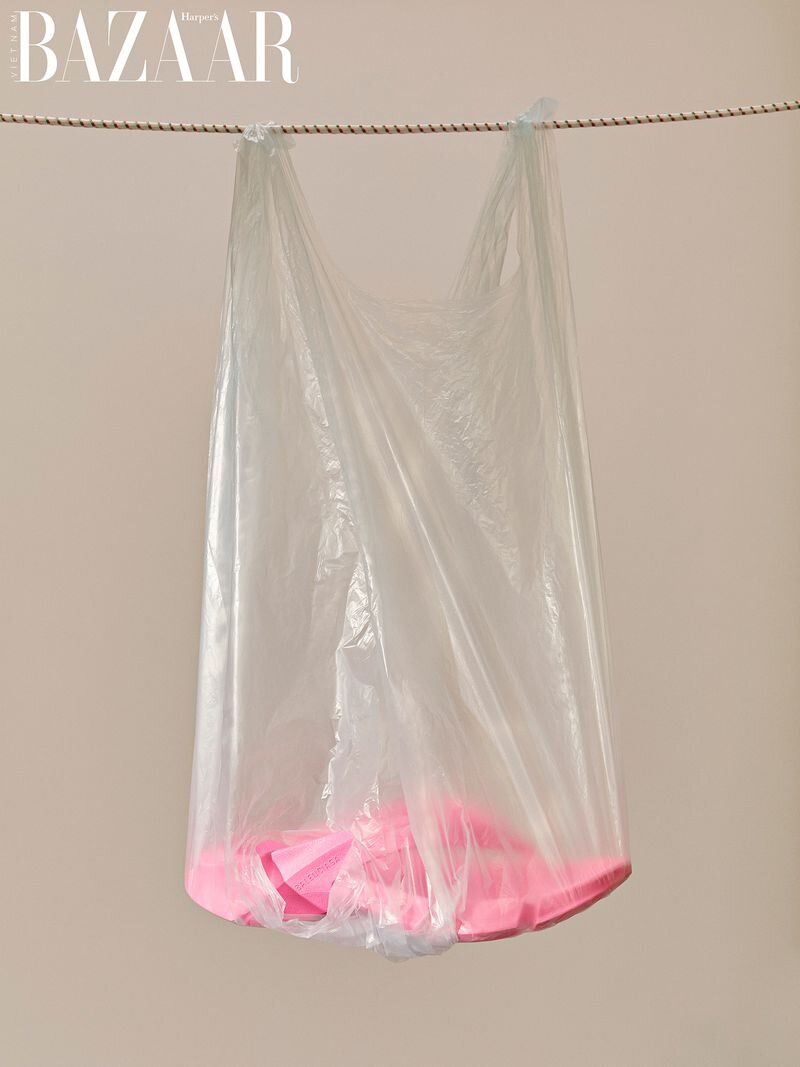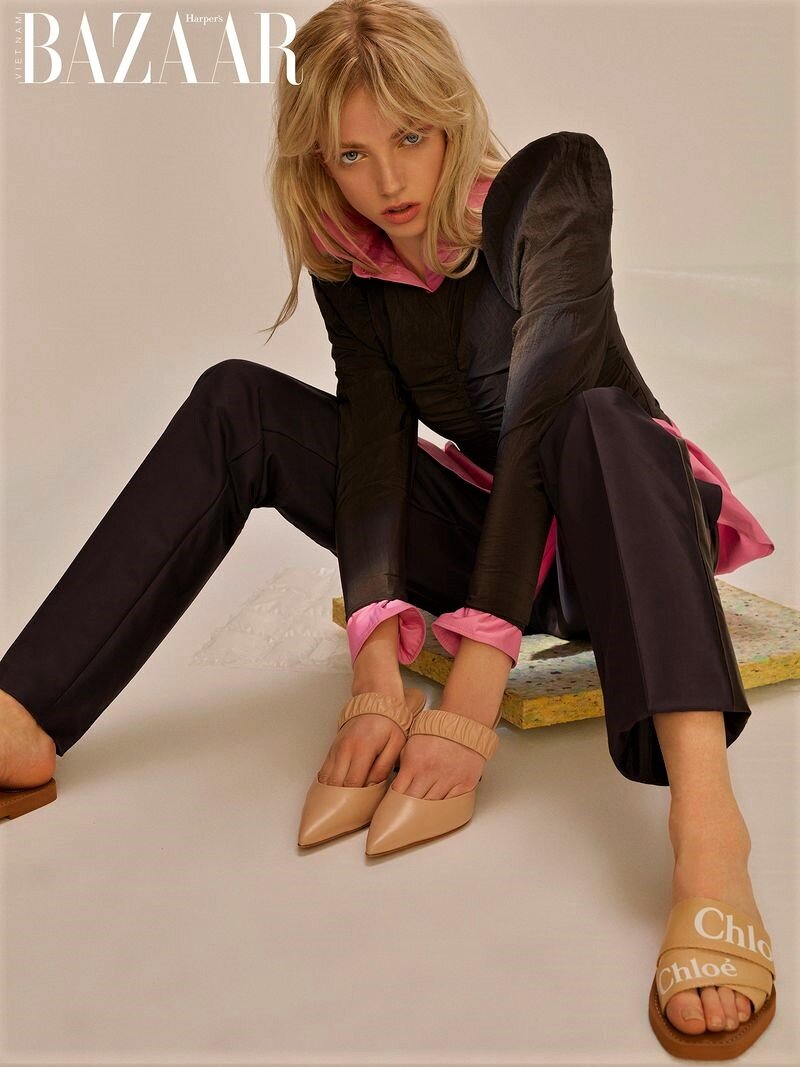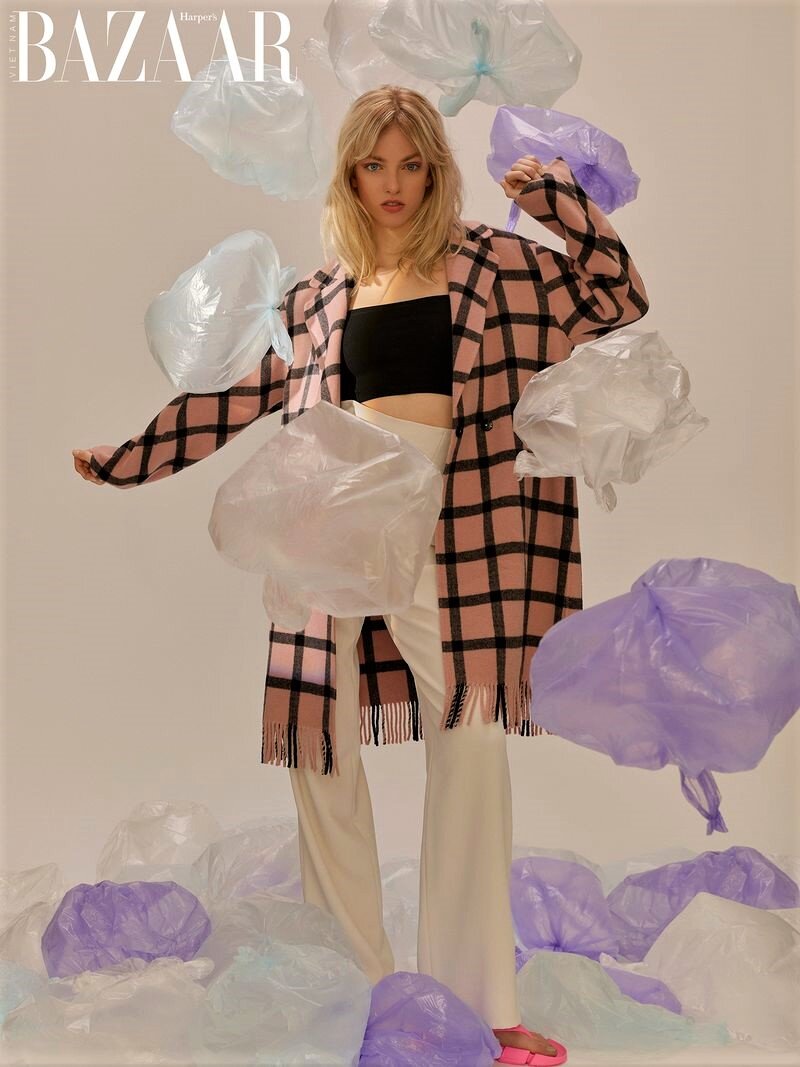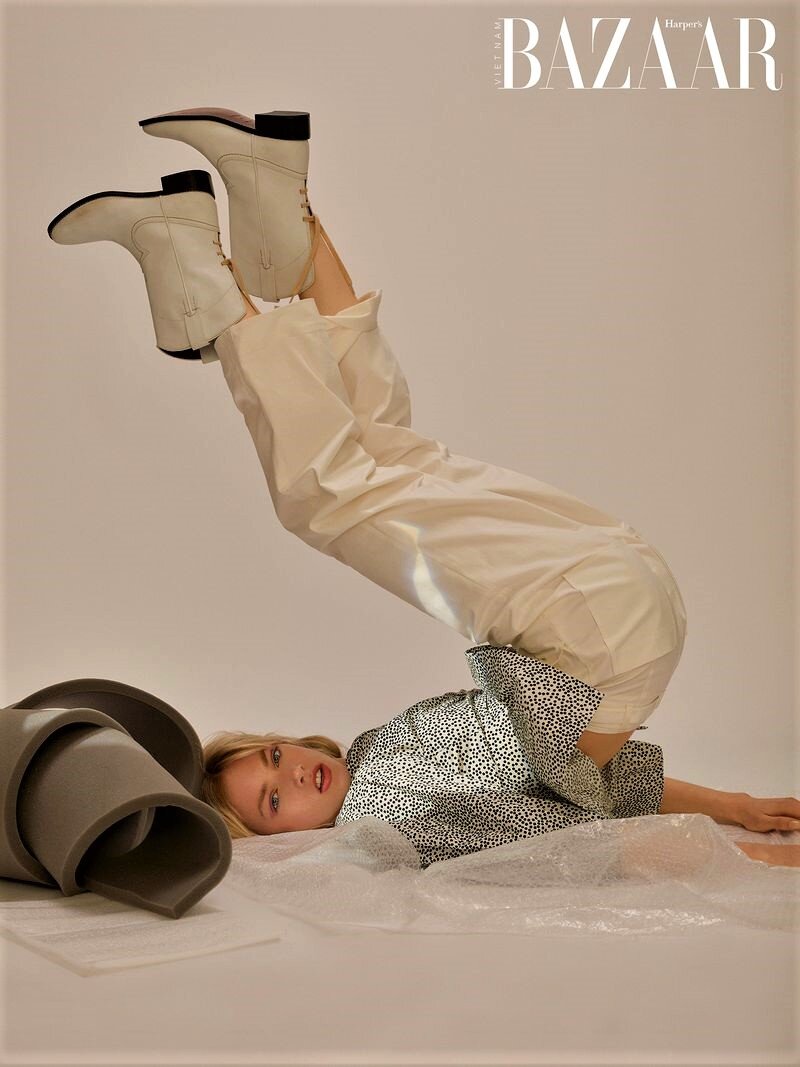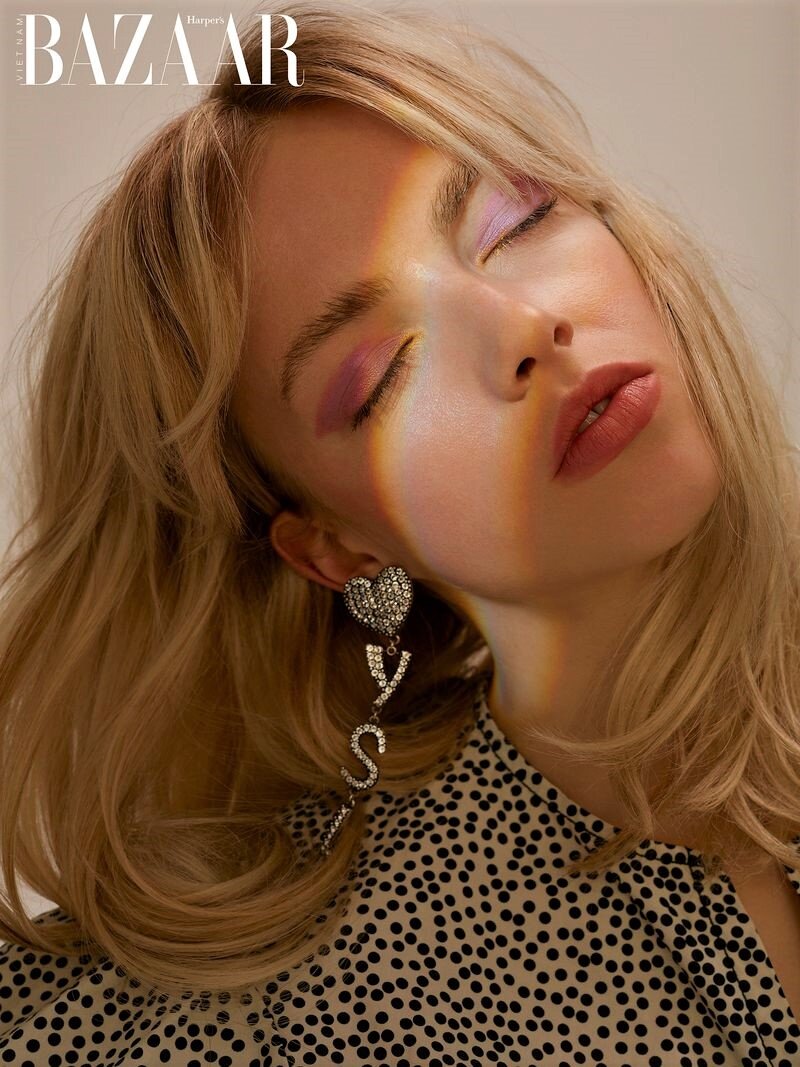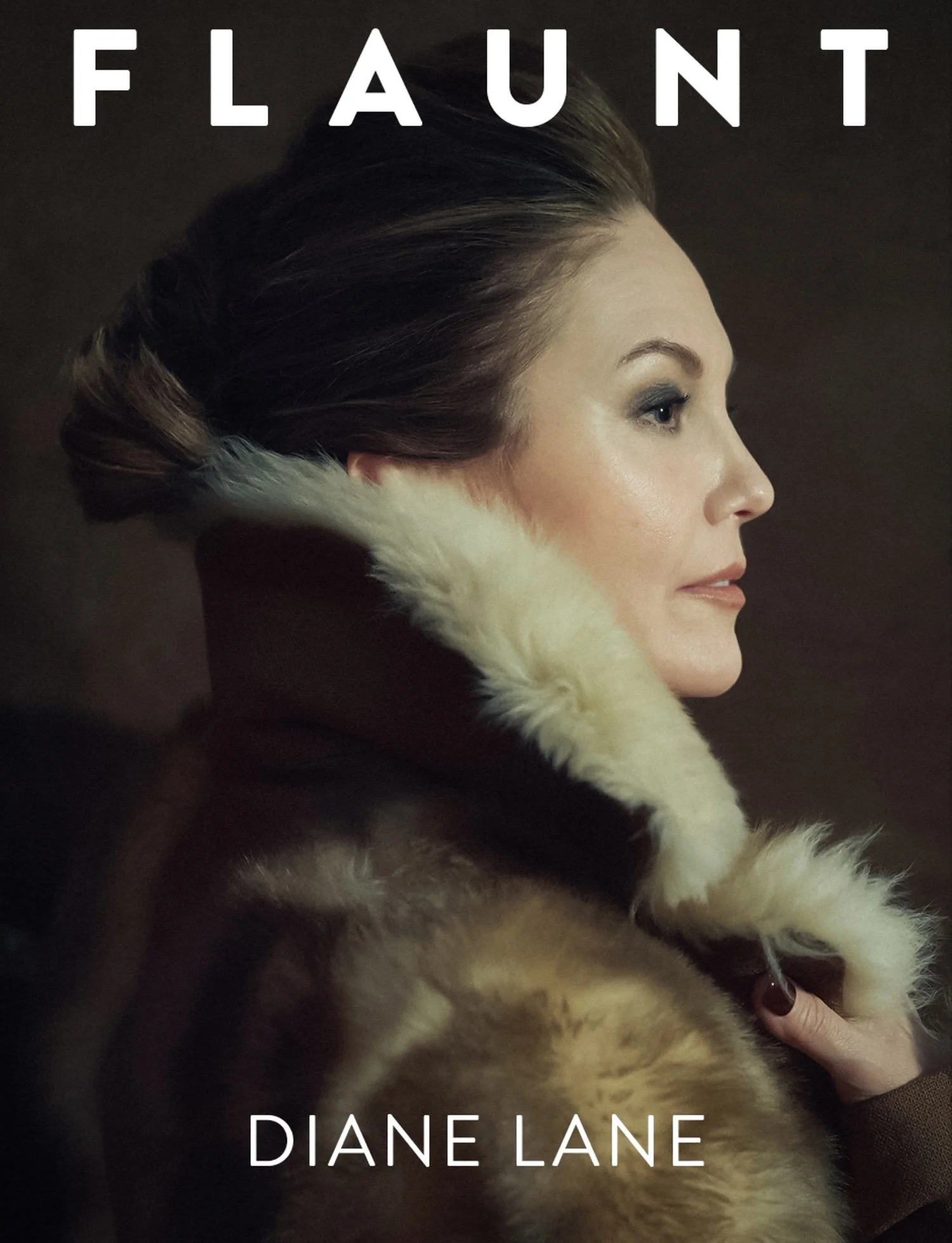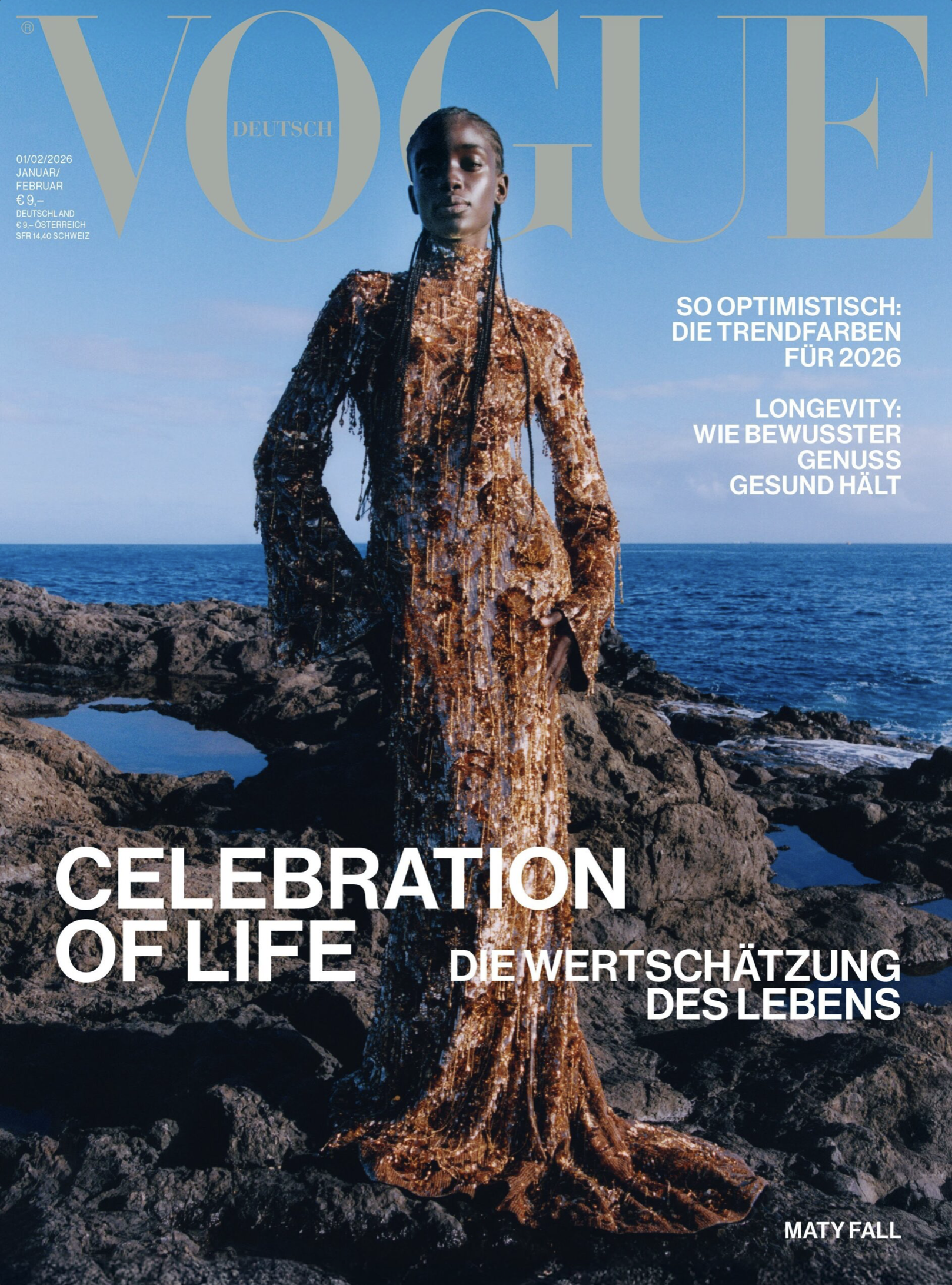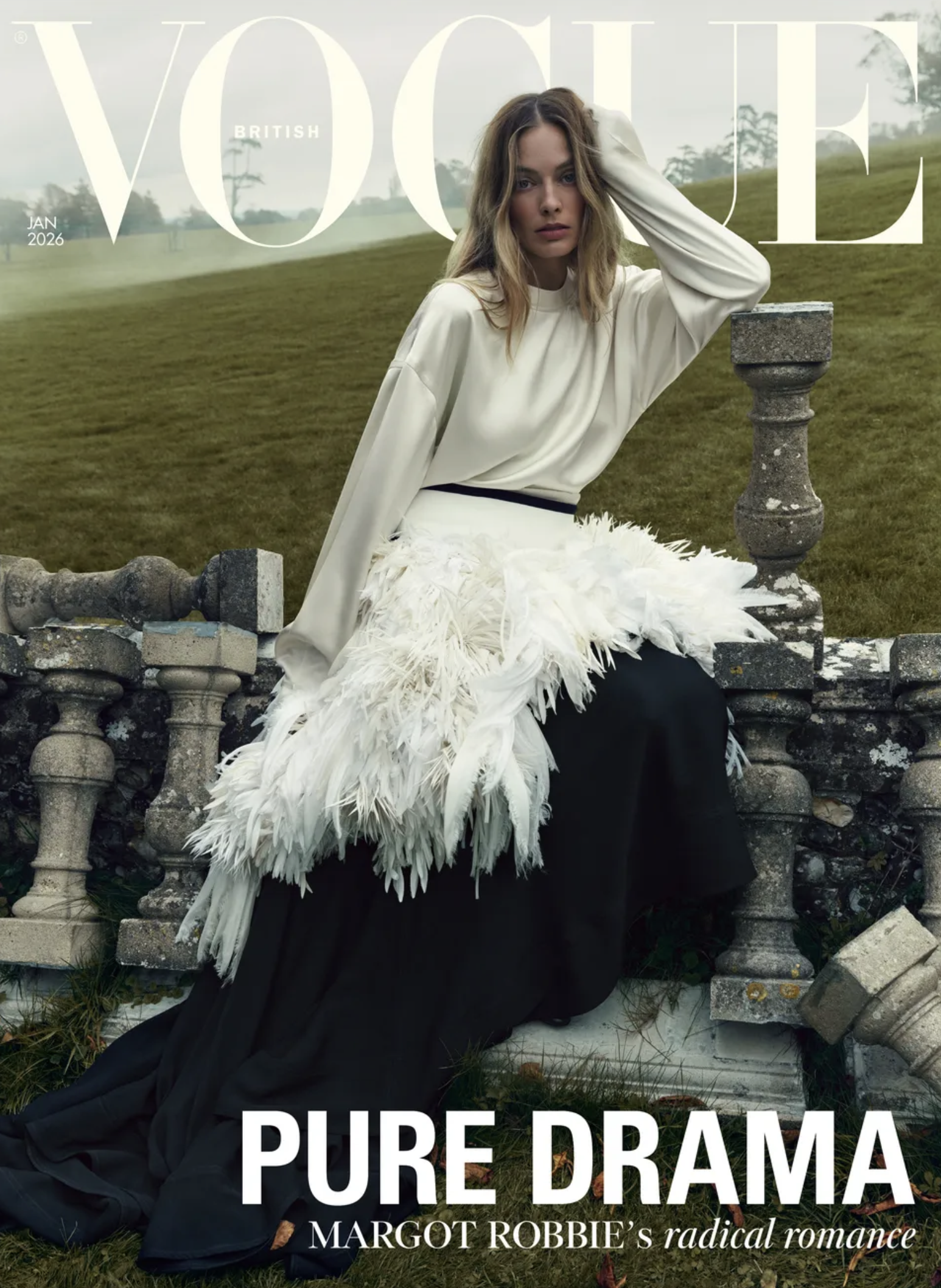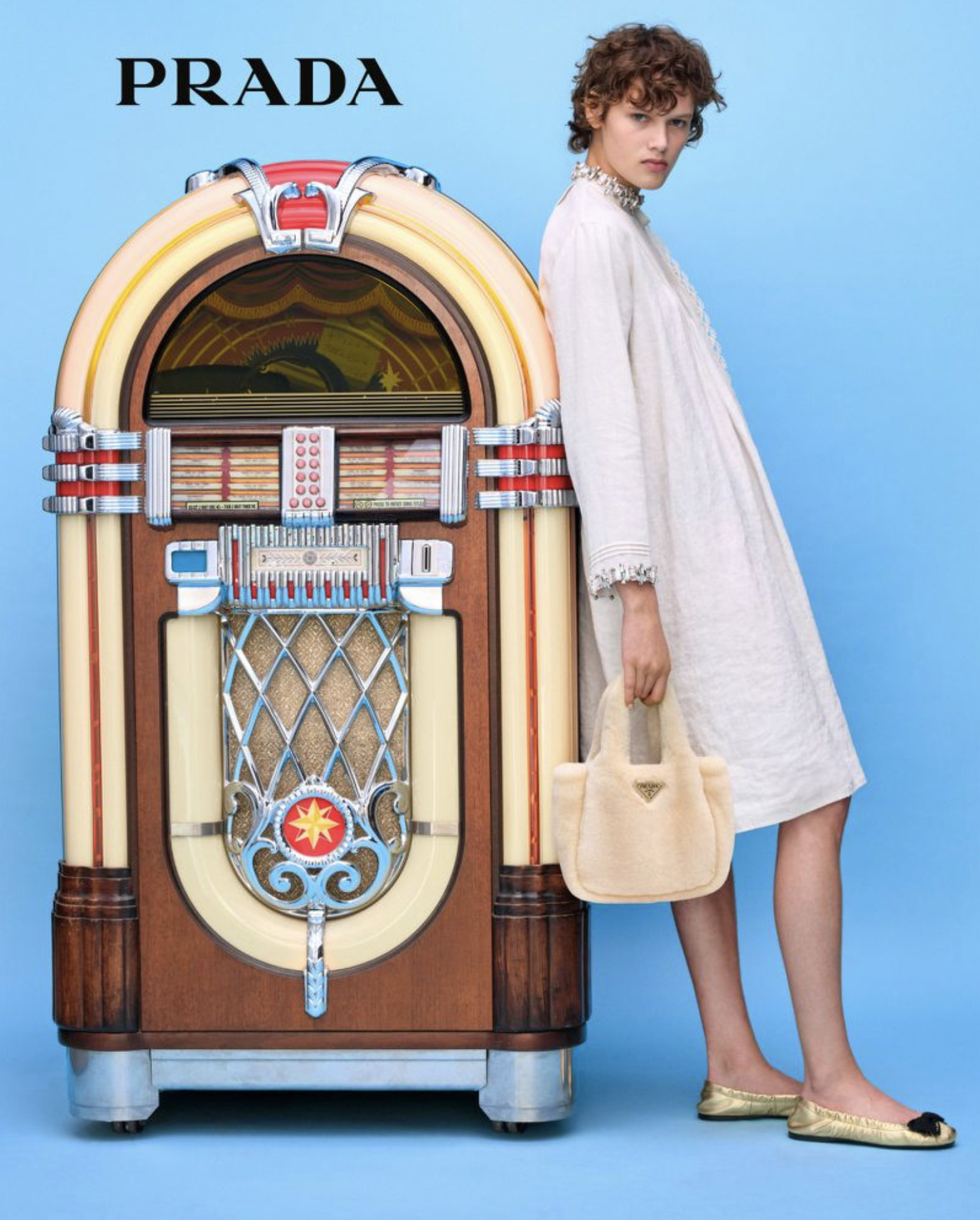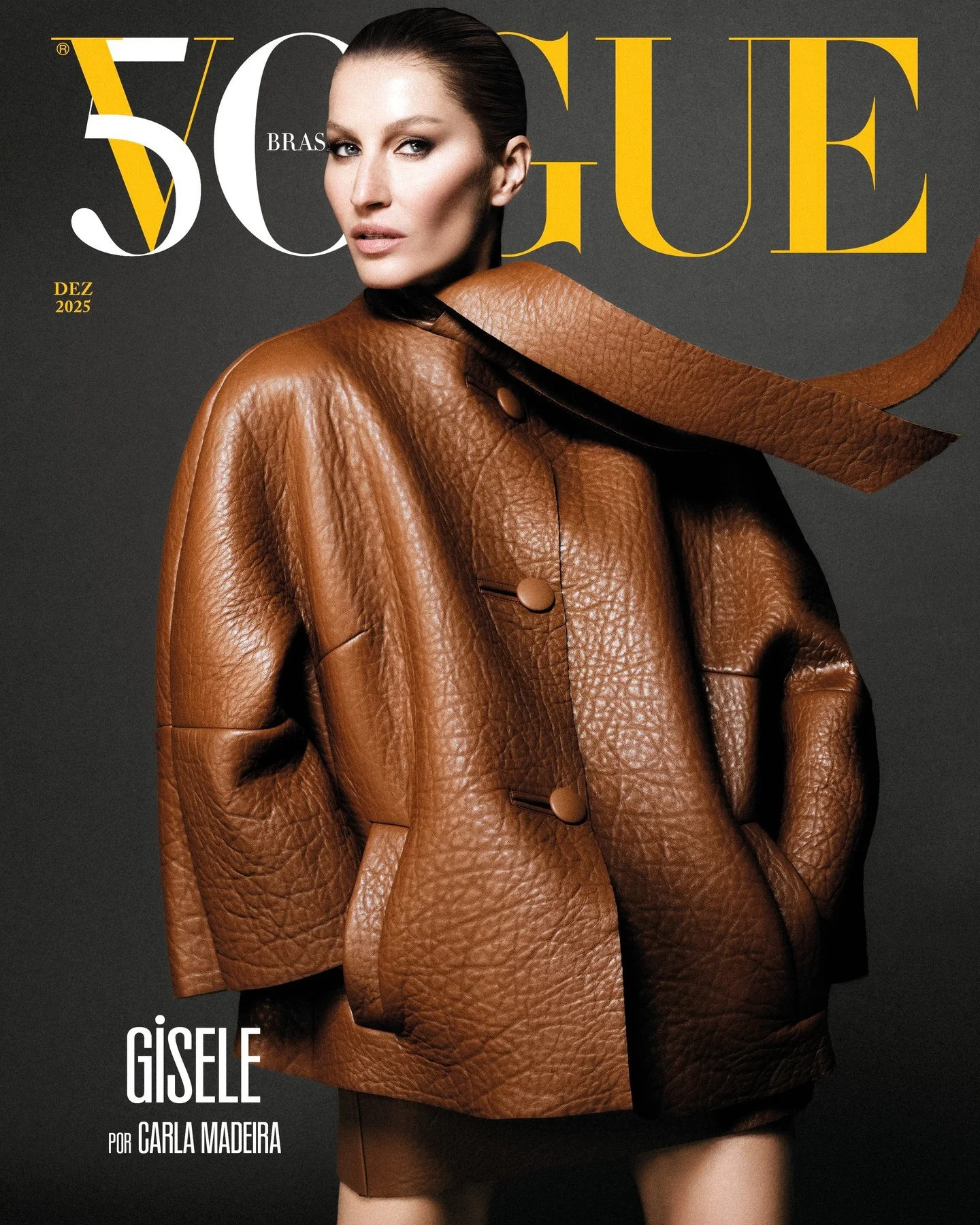Frivolous, Glam Snaps of Fashionable Plastic Sink in Harper's Bazaar Vietnam
/The fashion activism, environmental concerns proposition of Harper’s Bazaar Vietnam is to join forces with photographer Per Florian Appelgren [IG]and stylist Jenny Gold [IG] in this ‘clear-eyed’ fashion story ‘The Plasticize — What to Do With Plastic’ about fashion’s obsession with plastic. The images, writes HB Vietnam “evoked thoughts for us about the solution”.
Really????? You sure lost me in this sea of modern-looking, cool plastic that is supposed to prompt thoughtful conversation. Now THIS fashion story is greenwashing at its best, people. Period.
As a courtesy I went to Harper’s Vietnam — unlike 95% of writers out there — in an effort to give the creative team an opportunity to explain the images.
Anne auggestion: How about adding a big plastic fish to the shoot, just one image with a fashionable collar of bubble wrap tied around its throat and more plastic running out of its blissed-out mouth. As it chokes to death, model Xara Giulia could be petting its head, saying “Good fish, good fish . . just calm down now. This fashion intellectuals team is on the case. . . Just be a good and patient fish. . . Change is coming from the fashionistas. . . We promise you . . . Hang tight, fishies. . . The cool people are on the case, giving you 10 fashion tips on how to artfully make plastic cool, while we call it recycling. HA. HA. HA!”
And we wonder why Greenpeace hates us!!!
Translated from Harper’s Bazaar Vietnam, the self-promotional fashion story aesthetic is attributed to Appelgren’s mother. “My mother is active in the field of art. My artistic path is probably due to her influence.” As a result “his keen eye, attention to detail, helps him create vivid and meaningful images.”
Sorry, but this arty fashion story flies way above my “how to promote environmental consciousness IQ.” It’s a celebration of plastic right out of Dustin Hoffman’s 1967 movie “The Graduate” masquerading as “meaningful images”.
Stopping by Chloe designer Gabriela Hearst’s IG just now — Malala wears her clothes and Stella McCartney’s in the July 2021 issue of British Vogue — I note that Hearst is out hauling plastic garbage along the ocean. Given her longstanding, not frivlous environmental pedigree — like Stella’s — Gabriela Hearst doesn’t find glam snaps of fashionable plastic very amusing.
Update: The goddesses are arriving, understanding that I’m probably in trouble with these blunt comments, but the larger concern of saving our planet is the priority. So more support for my argument is flooding the inbox. Thursday’s New York Times style section has a feature The Vogueing Protesters of Bogotá.
Had a little more direct energy been put into this photo shoot, we have wonderful examples of additional uses for plastic AND direct messages could have been applied ,so that there was no confusion in feeble minds like mine as to what the real motives are behind the photo shoot. But then, that might affront future clients we’re trying to attract, and we certainly wouldn’t want to do that. ~ Anne
Tom Ford Gets Serious About Plastic Pollution
Read about the seriously-credentialed, new campaign launched by Tom Ford to deal concretely with plastic pollution after meandering through ‘The Plasticize — What to Do With Plastic’. Intro is at end of this utterly orgasmic, rich-with relevance and meaning fashion story.
Let’s Get Real About Fashion’s Contribution to Plastic Pollution in Oceans
Tom Ford and 52HZ Launch a $1.2 Million Prize for Biodegradable Poly Bag Replacement AOC Sustainability
In a more literal effort to save dying fishies and our polluted oceans, designer and chairman of Fashion Designers of America (CFDA0 Tom Ford has teamed up with 52HZ — the advisory arm to Adrian Grenier’s organization Lonely Whale, in the development of his recent ocean-plastics watch — to create the Tom Ford Plastic Innovation Prize.
The new competition will create a major incentive for designers, manufacturers, and inventors to create a biodegradable alternative to thin-film plastic. This new bag would naturally degrade in the soil or ocean without human intervention.
The grand prize is $1.2 million, with support from the prize’s investors to bring it to the market by 2025. Submissions opened Thursday, May 20.




